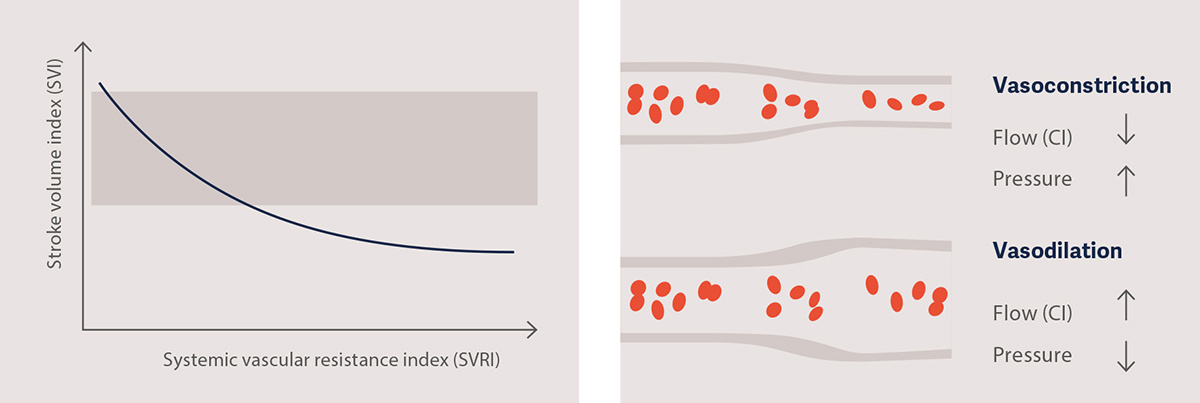Advanced Monitoring Parameters: SVRI
Afterload - Systemic Vascular Resistance Index (SVRI)
The afterload is another determinant of stroke volume / cardiac output. The physiological meaning of SVRI is the tension or pressure that builds up in the wall of the left ventricle during ejection. Following Laplace’s law, the tension upon the muscle fibers in the heart wall is the product of the pressure within the ventricle and the ventricle radius, divided by the ventricle wall thickness.
In the clinical context things are often simplified and so the afterload is seen as the resistance the heart has to pump against; the systemic vascular resistance index (SVRI) is the parameter that represents this.[1]
Afterload

Systemic vascular resistance index (SVRI)
- If the afterload (SVRI) is increased, the heart must pump with more
- power to eject the same amount of blood as before.
- The higher the afterload, the less the cardiac output.
- The lower the afterload, the higher the cardiac output.
If the afterload exceeds the performance of the myocardium, the heart may decompensate.

